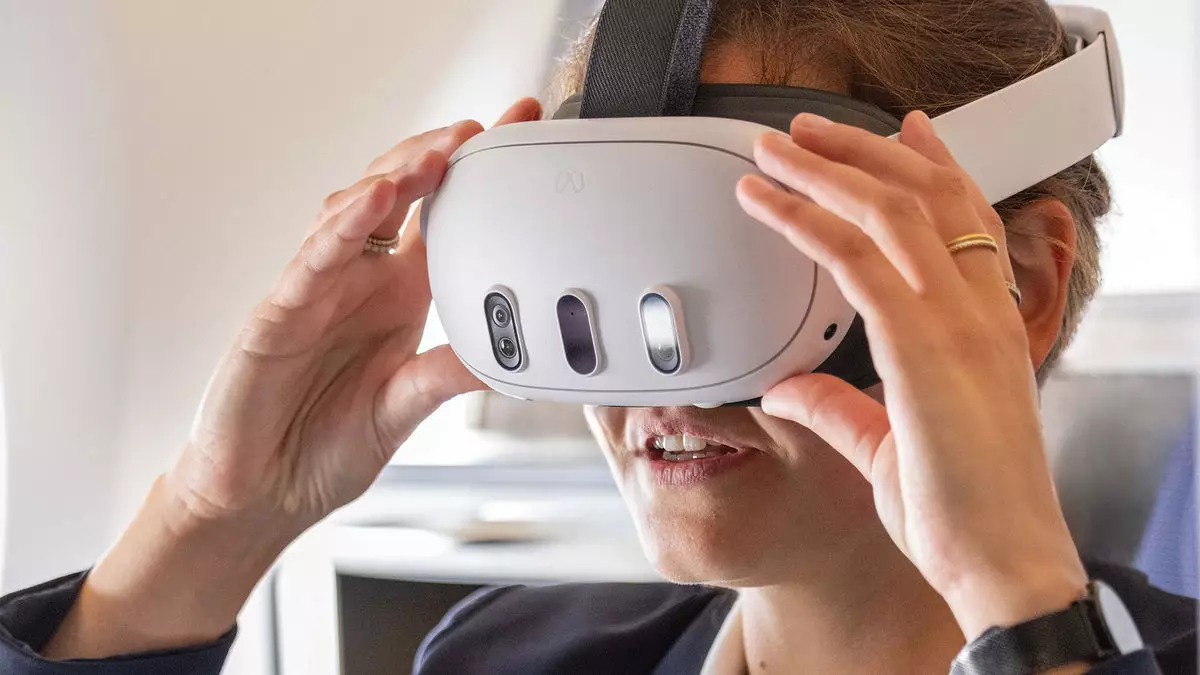In the ongoing quest to enhance the travel experience, Lufthansa has embarked on a bold experiment using virtual reality (VR) technology to reimagine in-flight entertainment. This exploration signifies not only a technological advancement for one airline but also sets a precedent for a transformative shift that may redefine the passenger experience at 35,000 feet. Beginning October 11, Lufthansa initiated its trial of Meta Quest 3 mixed-reality headsets across selected routes in its newly outfitted Airbus A350 Allegris business-class cabins, opening the door to a completely new realm of onboard engagement and entertainment.
Initially available on select transatlantic routes, such as Munich-San Francisco and Munich-Chicago O’Hare, the program exemplifies a tailored approach to passenger comfort and entertainment. Lufthansa aims to offer its business class passengers an extensive array of experiences, from cinematic entertainment to mindfulness activities, all while neatly fitting into the confined space of an airplane. The operational mode of these headsets is particularly noteworthy; they can simulate a traditional viewing experience or create an entire virtual environment, thereby altering the perception of spatial constraints typical of airplane travel.
Among its diverse offerings, Lufthansa’s VR library includes feature films, immersive meditation sessions, an engaging virtual chess game, informative podcasts, and an enticing glimpse at the journey’s destination. This variety is crucial in catering to a wide spectrum of traveler preferences, enhancing overall passenger satisfaction in a highly competitive airlines market.
One of the most intriguing aspects of Lufthansa’s approach lies in the mixed-reality component, which allows users to blend their real surroundings with digital overlays. For instance, when engaging in a game of virtual chess, players can place the board anywhere in their limited cabin space, providing a unique sense of control and spatial awareness. Such innovative experiences elevate traditional in-flight entertainment into a realm that encourages social interaction—passengers can challenge each other while sharing the same virtual board, embodied through avatars, thus adding a layer of excitement and engagement.
The upgrade in destination previews deserves special mention as well. Instead of simplistic two-dimensional images often seen on seatback displays, travelers can enjoy virtual flights over iconic landscapes, enriching their travel anticipation and providing a more engaging context for their upcoming adventures. This evolution in content delivery not only captivates but also enhances the emotional connection between the passenger and their destination.
The visionary perspectives shared by Bjoern Becker, Lufthansa’s head of future intercontinental experience, suggest an evolving landscape for VR in aviation. While the airline initially offers this immersive experience to a limited audience of 80 passengers per day, future expansions are anticipated as more Airbus A350 Allegris aircraft are integrated into the fleet. Becker acknowledges that although wide distribution of headsets across all passengers is unlikely, a gradual shift towards broader usage as the technology becomes compact and accessible is feasible.
The potential for commercial applications also exists in this space; enhanced merchandising opportunities may unfold within the mixed-reality environment, where passengers can engage with virtual displays of products—from luxury automobiles to travel packages—fostering a new avenue for revenue generation in the airline industry.
While Lufthansa embraces the future possibilities that VR technology presents, it is essential to note that not all industry stakeholders are convinced of its imminent takeover. Executives from other airlines, speaking at recent forums, have expressed skepticism regarding the demise of traditional seatback entertainment. Delta’s managing director of customer experience, Ekrem Dimbiloglu, pointed out the significant usage of existing seatback systems, noting that the familiarity and reliability of such setups remain paramount for many passengers. Similarly, Aeromexico’s Antonio Fernandez reinforced the notion that seatback screens are here to stay, at least in the immediate decade ahead.
These contrasting views indicate that while the allure of VR and augmented reality is undeniable, their widespread acceptance among the flying public remains uncertain. The complexities of passenger preferences, comfort levels with emerging technologies, and the variability of travel experiences contribute to a nuanced dialogue surrounding the evolution of in-flight entertainment.
As Lufthansa ushers in a new chapter of in-flight entertainment enriched by virtual reality, it is evident that the future of travel experiences is slowly but surely being redefined. However, the balance between innovative technology and the comfortable, familiar offerings of traditional seatback systems will take center stage as airlines navigate the intricate landscape of passenger expectations and technological feasibility. The journey toward an augmented travel ecosystem is just beginning, and the evolution of in-flight entertainment holds the potential to surprise us all.

